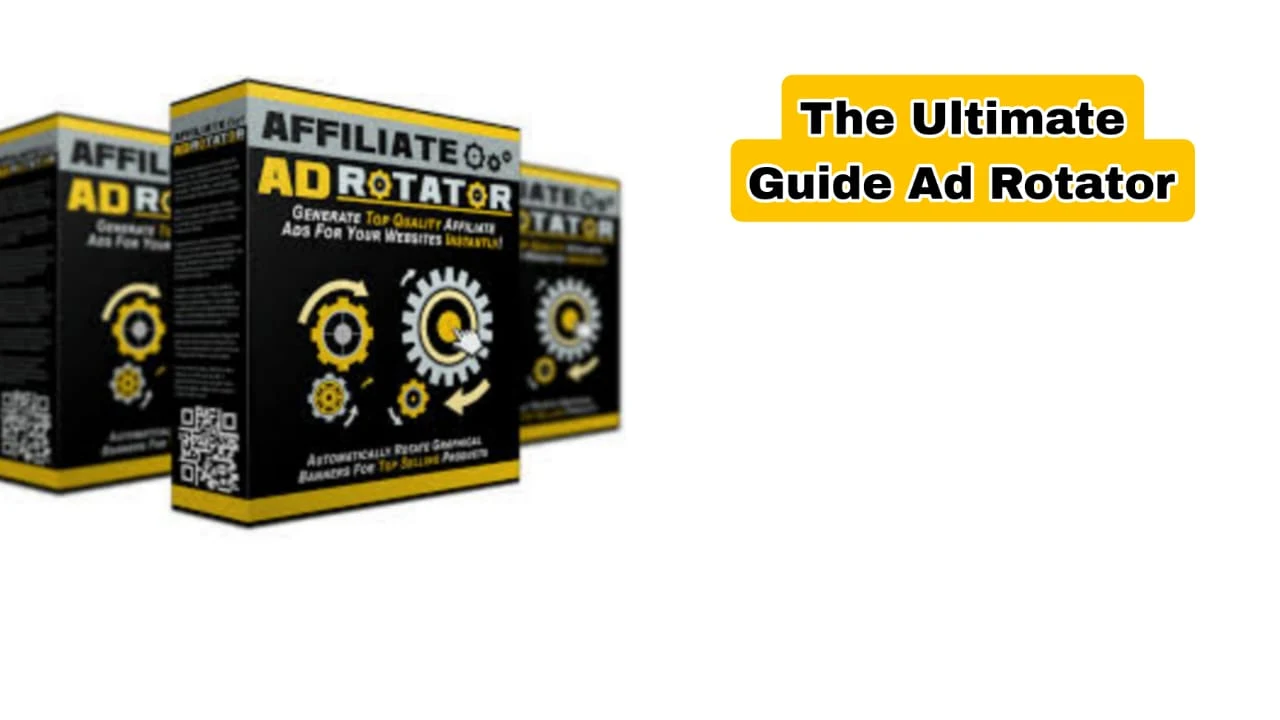In the fast-evolving digital marketing space, delivering the right message to the right audience is crucial. One tool that has gained popularity for optimizing ad performance is the ad rotator. Whether you’re running a small business or managing large-scale ad campaigns, understanding the role and benefits of ad rotators can take your advertising strategy to the next level. This article explores the concept, advantages, and best practices of ad rotators to help you maximize their potential.
What is an Ad Rotator?
An ad rotator is a tool or script that cycles through multiple advertisements in a specific space on a website or application. Instead of displaying the same ad repeatedly, an ad rotator ensures variety by presenting different ads based on predefined rules. This approach increases engagement and optimizes ad effectiveness.
Ad rotators are widely used in pay-per-click (PPC) campaigns, banner ads, and affiliate marketing. They allow businesses to test various ad creatives, headlines, and offers to determine which performs best with their target audience.
Why Use an Ad Rotator?
Ad rotators bring several key benefits to digital advertising:
- Increased User Engagement
Displaying the same ad repeatedly can lead to "banner blindness," where users ignore repetitive content. Ad rotators solve this by keeping content fresh and varied, increasing the likelihood of user interaction.
- Enhanced Ad Performance
By enabling A/B testing, ad rotators allow marketers to test different versions of ads. This data-driven approach identifies the most effective designs, messaging, and calls-to-action (CTAs) to drive clicks and conversions.
- Better ROI
With ad rotators, you can focus your budget on high-performing ads, reducing waste and maximizing return on investment (ROI). This ensures that your ad spend delivers meaningful results.
- Flexibility Across Platforms
Ad rotators support a range of ad formats, from banners to videos, and can be customized for various platforms and devices. This adaptability makes them an essential tool for businesses of all sizes.
- Advanced Targeting Capabilities
Many ad rotators integrate with analytics tools to provide precise targeting options. Ads can be customized based on user demographics, behavior, and location, delivering more personalized and relevant content.
How Does an Ad Rotator Work?
Ad rotators operate using algorithms to determine which ad to display. Here’s how they typically function:
Ad Inventory Upload: Advertisers upload multiple ad creatives into the tool.
Rule Configuration: Rules are set for how ads should rotate, such as time intervals, priority levels, or targeting parameters.
Ad Display: The ad rotator selects and displays ads based on the configured rules and user profiles.
Performance Tracking: Metrics like impressions, clicks, and conversions are collected for each ad.
Optimization: Based on performance data, the tool adjusts rotations to prioritize higher-performing ads.
Ad rotators often integrate with platforms like Google Ads, Facebook Ads, and third-party ad networks, streamlining the advertising process.
Best Practices for Using an Ad Rotator
To maximize the effectiveness of your ad rotator, follow these best practices:
- Define Clear Objectives
Establish clear goals for your campaign, such as increasing brand awareness, driving traffic, or generating leads. These objectives will guide your ad rotation strategy.
- Conduct A/B Testing
Test different elements of your ads, including visuals, headlines, and CTAs. Use the data collected to determine which combinations resonate most with your audience.
- Regularly Monitor Performance
Track key performance indicators (KPIs) such as click-through rates (CTR), conversion rates, and engagement levels. Regular monitoring helps refine your strategy and improve results.
- Optimize for Mobile Users
With most internet users accessing content on mobile devices, ensure your ads are mobile-friendly. Test responsive designs and formats to deliver a seamless experience.
- Avoid Overwhelming Users
Rotate ads thoughtfully to avoid overwhelming your audience with too many messages. Set reasonable intervals and limits on the number of ads displayed per session.
- Leverage Targeting Features
Use dynamic targeting capabilities to serve personalized ads based on user behavior and preferences. Tailored ads are more likely to capture attention and drive engagement.
- Integrate Analytics Tools
Connect your ad rotator with analytics platforms like Google Analytics to gain deeper insights into user behavior and campaign performance. This data will help you make informed decisions.
Top Ad Rotator Tools
Here are some popular ad rotator tools to consider:
- Google Ad Manager: A robust platform for managing ad campaigns across multiple channels.
- AdSanity: A WordPress plugin that simplifies ad rotation for website owners.
- Bannerwise: A creative management platform with ad rotation features for dynamic ads.
- Revive Adserver: An open-source solution offering advanced rotation and targeting options.
- AdPlugg: A cloud-based tool designed for small to medium-sized businesses.
SEO Benefits of Ad Rotators
In addition to optimizing ad performance, ad rotators can positively impact your website’s search engine optimization (SEO):
- Reduced Bounce Rates: Engaging and relevant ads can keep visitors on your site longer, lowering bounce rates and improving SEO metrics.
- Improved User Experience: Dynamic, personalized ads create a better user experience, encouraging repeat visits and building credibility.
- Increased Page Views: Rotating ads can encourage users to explore more pages on your site, boosting page views and session duration.
Conclusion
Ad rotators are an invaluable tool for enhancing your digital marketing strategy. By rotating ads intelligently, you can boost user engagement, optimize ad performance, and achieve a higher ROI. Whether you’re running PPC campaigns, affiliate programs, or display ads, incorporating an ad rotator can elevate your results in today’s competitive digital landscape.
Start leveraging the power of ad rotators to transform your advertising efforts. With the right tools and strategy, you can create campaigns that not only capture attention but also drive meaningful business outcomes.
Read More: -







.jpeg)


